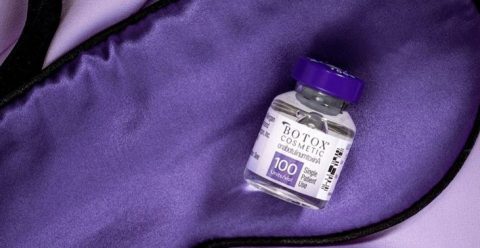Adres engellerini aşmak isteyenler için bahsegel bağlantısı çözüm oluyor.
Curacao lisansı, dünya genelinde 160’tan fazla ülke tarafından tanınmakta olup, bahsegel giril bu lisansa sahip güvenilir markalardan biridir.
Online eğlencede kaliteyi ve güveni birleştiren bahsegel güncel adres, her gün güncellenen promosyonları ve canlı destek hizmetleriyle kullanıcılarına kusursuz bir deneyim yaşatıyor.
Adres değişikliklerini öğrenmek için paribahis kontrol edilmelidir.
Modern tasarımı ve sade yapısıyla Paribahis kolay kullanım sağlar.
Rulet, blackjack ve slot makineleriyle dolu Paribahis giriş büyük ilgi görüyor.
Bahis sektöründe teknolojiyi etkin kullanan bahsegel guncel, yapay zeka destekli sistemleriyle adil ve güvenli bir oyun ortamı sağlar.
Global ölçekte 500 milyondan fazla insan online kumar oynamakta olup, Bahsegel giriş güncel bu kitlenin güvenilir platformlarından biridir.
Avrupa’da yapılan araştırmalara göre, canlı krupiyeli oyunlar kullanıcıların %61’i tarafından klasik slotlardan daha güvenilir bulunmuştur; bu güven bettilt girş’te de korunmaktadır.
Kullanıcılar sorunsuz erişim için paribahis bağlantısını takip ediyor.
Canlı casino yayınları artık 4K çözünürlükte yapılabilmekte ve bazı operatörler düşük gecikmeli 60 FPS akış teknolojisi kullanmaktadır; bahsegel girş bu teknolojileri benimsemiştir.
Türk kullanıcıların en çok tercih ettiği canlı oyunlar rulet ve blackjacktir, bahsegel hiriş bu seçenekleri sunar.
Dijital eğlenceyi artırmak için bettilt kategorileri ilgi çekiyor.
Online platformda hızlı işlem garantisi sunan paribahis giriş kullanıcılarına zaman kazandırır.
Mobil deneyimi ön planda tutan rokubet uygulaması sektörde fark yaratıyor.
Bahis endüstrisinde ortalama kullanıcı memnuniyet oranı %85 civarındadır, ancak rokubet yeni giriş bu oranı %92’ye çıkarmıştır.
Yeni nesil özelliklerle gelen Rokubet güncel giriş sürümü heyecan veriyor.
Bahis oranlarında lider konumda yer alan Bahsegel kullanıcılarına avantaj sağlar.
Cep telefonlarından kolay erişim için madridbet oldukça tercih ediliyor.
Engellemelere rağmen erişim sağlamak için bettilt kullanılıyor.
Bahis kullanıcılarının %72’si spor bahisleriyle kazanç elde etmeyi hedeflemektedir; paribahis güncel giriş adresi bu hedefi destekleyen yüksek oranlar sunar.
Her cihazda sorunsuz çalışan bettilt platformu kullanıcıların tercihi oluyor.
Maçlara özel kupon fırsatları bettilt bölümünde yer alıyor.
Bahis dünyasında hızla büyüyen topluluğuyla bettilt her geçen gün güçleniyor.
Bahis dünyasında her zaman güvenle tercih edilen bettilt istikrarlı bir platformdur.
Adres sorunlarını çözmek için her zaman bahsegel tercih ediliyor.
Yatırım bonuslarıyla kazancınızı artıran bahsegel giriş avantajlı bir deneyim sağlar.
Canlı casino yayınları artık 4K çözünürlükte yapılabilmekte ve bazı operatörler düşük gecikmeli 60 FPS akış teknolojisi kullanmaktadır; bettilt girş bu teknolojileri benimsemiştir.
Curacao lisanslı platformlar arasında güvenilirlik açısından üst sıralarda yer alan bettilt giriş güncel, uluslararası denetimlerden başarıyla geçmiştir.
Dijital oyun deneyimini artırmak için Madridbet platformları kullanılıyor.
Yüksek RTP oranları, yüzlerce slot seçeneği ve canlı casino oyunlarıyla bahsegel guncel, oyun severlere zengin bir içerik yelpazesi sunuyor.
Online casino pazarında Türkçe dil desteği sunan bahsegel giriş adresi kullanıcı deneyimini artırır.
Kumarhane heyecanını yaşatmak için paribahis çeşitleri büyük önem taşıyor.
Yatırımlarını artırmak isteyenler bettilt güncel giriş promosyonlarını takip ediyor.
2025 yılı için planlanan bettilt yenilikleri bahisçileri heyecanlandırıyor.
2025 yılında ortalama bahis tutarı 250 TL’ye ulaşırken, paribahis giriş adresi düşük limitli kuponlara izin verir.
Kullanıcıların hesaplarına hızlı ve sorunsuz ulaşabilmesi için paribahis adresi her zaman güncel tutuluyor.
Kumarhane keyfini çevrimiçi yaşamak isteyenler bahsegel seçeneklerini seçiyor.
Kullanıcılar, sisteme erişim için her gün bettilt sayfasına yöneliyor.
Oyunların şeffaflığı açısından RTP oranlarının paylaşılması, Bahsegel.giriş gibi lisanslı markalar için zorunludur.
Türkiye’de en çok oynanan slotlardan biri Sweet Bonanza’dır; bahsegel iletişim numarası bu oyunun lisanslı versiyonunu barındırır.
Her spor dalında en iyi oranlara sahip bettilt oyuncuların tercihidir.
Curacao lisanslı platformlarda dolandırıcılık tespiti ortalama 1 milyon işlemde 3’tür; bu, paribahis gitiş’in yüksek güvenlik düzeyini gösterir.
Online oyunlarda RTP oranı ortalama %95.8 olarak ölçülürken, paribahis mobil uygulama bu oranı %97.4 seviyesine taşımaktadır.
Her kullanıcı için öncelik olan bahsegel işlemleri güvence sağlıyor.
Yatırım yapanlar için özel olarak hazırlanan deneme bonusu veren bahis siteleri kampanyaları büyük ilgi görüyor.
Avrupa merkezli Bahsegel hiriş altyapısı, Türk oyuncular için düşük ping bağlantısı sunar.
Kazancını artırmak isteyen oyuncular Bahesegel promosyonlarını takip ediyor.
Curacao lisanslı platformlarda kullanıcıların dolandırılma olasılığı %0.05’in altındadır ve bettilt giril bu güvenlik seviyesini sürdürmektedir.
Kullanıcı güvenliğini ön planda tutan Bahsegel verilerinizi şifreli sistemle korur.
Kazancını artırmak isteyen kullanıcılar madridbet kodlarını kullanıyor.
Online casino deneyimini gerçek hale getiren Paribahis gelişmiş grafiklerle fark yaratır.
Canlı destek hizmetiyle kullanıcı sorunlarını hızla çözen Bahsegel profesyonel bir ekibe sahiptir.
Hızlı ve güvenli erişim için kullanıcılar Paribahis bağlantısını takip ediyor.
Her zaman güvenilir hizmet anlayışıyla hareket eden madridbet sadık bir kullanıcı kitlesine sahip.
Yatırımlarını artırmak isteyenler bettilt güncel giriş promosyonlarını takip ediyor.
Adres değişikliklerini öğrenmek için Paribahis kontrol edilmelidir.
Her cihazda çalışan Bahsegel uygulaması kullanıcıların ilgisini çekiyor.
Curacao Gaming Authority verilerine göre 2025 yılında dünya çapında 900’den fazla aktif lisanslı operatör bulunmaktadır; bunlardan biri de Bahsegel 2025’tir.
Bahis dünyasında istikrarı, kaliteyi ve güveni bir araya getiren Paribahis giriş yap, oyuncularının memnuniyetini her zaman öncelikli tutuyor.
Paribahis2017 yılında Türkiye’de yasadışı bahisle mücadele için özel birimler kuruldu, bu süreçte giriş bettilt gibi lisanslı platformlar güvenli seçenek olarak öne çıktı.
Her kullanıcı güvenli işlem yapabilmek için Bahsegel altyapısına ihtiyaç duyuyor.
Tenis ve voleybol gibi farklı spor dallarında Bahsegel giriş fırsatları bulunuyor.
Statista verilerine göre dünya genelinde yaklaşık 2.3 milyar insan yılda en az bir kez bahis oynamaktadır; Rokubet guncel giris bu kullanıcılar için güvenli bir ortam sağlar.
Rulet, poker ve slot çeşitliliği sunan Bahsegel giriş oldukça ilgi çekici.
Kullanıcılar güvenliklerini sağlamak için Bahsegel altyapısına güveniyor.
Botox Injection Pre-treatment instructions

Before undergoing any cosmetic procedure, it’s crucial to be well-prepared and informed about what to expect and how to ensure the best possible results.
Botox, a popular non-surgical treatment designed to reduce the appearance of wrinkles and fine lines, requires careful pre-treatment preparation to ensure safety, effectiveness, and satisfaction with the outcome.
In this guide, we will outline essential pre-treatment instructions for Botox, providing you with the necessary information to optimize your experience and achieve your aesthetic goals. From medical considerations to lifestyle adjustments, following these instructions will help you maximize the benefits of Botox and minimize any potential risks or discomfort associated with the procedure.
So, let’s delve into the details of what you need to know and do before your Botox treatment.
1. Consultation:
Schedule a consultation with a qualified healthcare provider who is experienced in administering Botox injections. During this consultation, discuss your medical history, expectations, and any concerns you may have.
2. Medical History:
Be prepared to provide your healthcare provider with a comprehensive medical history, including any allergies, medical conditions, medications, or previous cosmetic procedures you have undergone.
3. Avoid Blood Thinners:
To minimize the risk of bruising and bleeding at the injection site, avoid taking blood-thinning medications such as aspirin, ibuprofen, and certain vitamins and supplements (like fish oil and vitamin K) for at least 3 days before your treatment. However, always consult your healthcare provider before discontinuing any medications.
4. Alcohol and Smoking:
Refrain from consuming alcohol and smoking cigarettes for at least 24 hours before your Botox treatment. Both alcohol and smoking can increase the risk of bruising and may affect the efficacy of the treatment.
5. Hydration:
Drink more water in the days leading up to your Botox appointment. Hydrated skin can improve the results of the treatment and minimize any discomfort during the injection process.
6. Skin Care:
Avoid using skincare products containing retinoids, glycolic acid, or other exfoliating agents for a few days before your treatment. These ingredients can increase skin sensitivity and irritation, making the injection process more uncomfortable.
7. Communicate:
Be open and honest with your healthcare provider about your desired outcomes and any concerns you may have. Clear communication will help ensure that you achieve the results you desire.
8. Avoid Sun Exposure:
Limit your exposure to the sun in the days leading up to your Botox treatment. Sunburned or irritated skin can increase discomfort during the injection process and may affect the results of the treatment.

9. Plan Ahead:
Schedule your Botox appointment at least one weeks before any important events or special occasions. While Botox injections typically have minimal downtime, you may experience some temporary swelling, bruising, or redness at the injection sites.
10. Arrive Clean:
Arrive at your appointment with clean, makeup-free skin. This will allow your healthcare provider to properly assess your facial muscles and determine the best injection sites for optimal results
11. Pain Management:
If you’re concerned about discomfort during the Botox injection process, discuss pain management options with your healthcare provider. They may recommend using a topical numbing cream or ice pack to minimize any discomfort.
12. Dress Comfortably:
Wear loose, comfortable clothing to your Botox appointment. This will allow you to relax during the treatment and minimize any potential irritation at the injection sites.
13. Arrange Transportation:
Since you may experience some temporary weakness or numbness in the treated areas immediately after the injection, it’s a good idea to arrange for someway to drive you home from your appointment.
14. Manage Expectations:
Understand that Botox results are not immediate and may take several days to fully develop. Additionally, individual results may vary, so it’s important to have realistic expectations about the outcome of your treatment. usually effect will start after 10-14 days after injection day .
15. Post-Treatment Care:
Ask your healthcare provider about any specific post-treatment instructions, such as avoiding strenuous exercise, excessive heat or cold, and massaging or rubbing the treated areas.
16. Follow-Up Appointments:
Schedule any necessary follow-up appointments with your healthcare provider to assess your results and determine if any additional treatments are needed to achieve your desired outcome.
17. Stay Informed:
Stay informed about the potential risks and side effects of Botox treatment, and don’t hesitate to ask your healthcare provider any questions or concerns you may have before proceeding.
18. Relax and Enjoy:
Finally, relax and enjoy the experience! Botox treatment can be a simple and effective way to refresh your appearance and boost your confidence. Trust in your healthcare provider’s expertise and focus on the exciting results that lie ahead.
19.Next Session Maintenance:
Plan for a follow-up session with your healthcare provider approximately 4-6 months after your initial Botox treatment to maintain the desired effects. Regular sessions can help sustain the smooth appearance of your skin by preventing the reappearance of wrinkles and fine lines as the effects of Botox gradually wear off over time. During this follow-up appointment, your healthcare provider can assess the longevity of your results, make any necessary adjustments to your treatment plan, and recommend additional sessions as needed to prolong the youthful appearance of your skin. By staying proactive and scheduling regular maintenance sessions, you can enjoy long-lasting benefits and consistently refreshed facial aesthetics with Botox.





